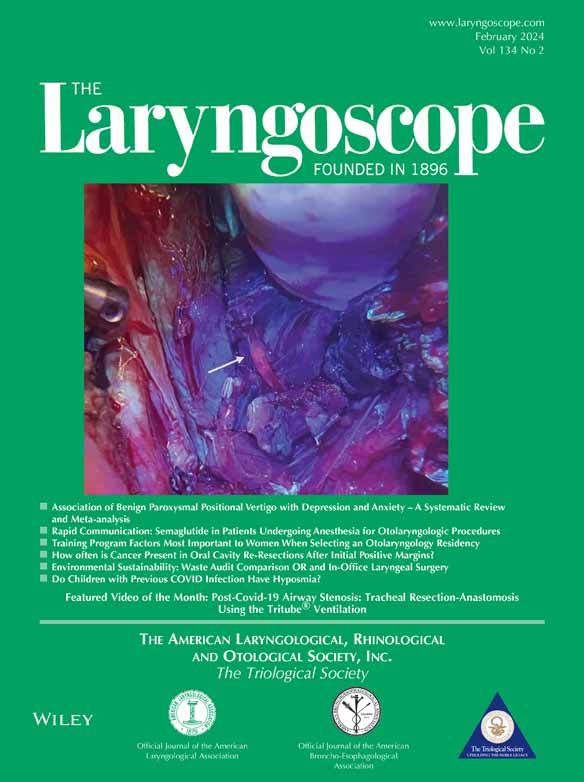Sociodemographic Disparities in Tracheostomy Timing and Outcomes
The authors have no funding, financial relationships, or conflicts of interest to disclose.
This study was presented as a poster presentation at the Annual Meeting of the American Broncho-Esophagological Association, occurring with the Combined Otolaryngology Spring Meetings (COSM) May 3–7, 2023.
Abstract
Objective
Tracheostomies are commonly performed in critically ill patients requiring prolonged mechanical ventilation. Although early tracheostomy has been associated with improved outcomes, the reasons for delayed tracheostomy are complex. We examined the impact of sociodemographic factors on tracheostomy timing and outcomes.
Methods
Medical records were retrospectively reviewed of ventilator-dependent adult patients who underwent tracheostomy from 2021 to 2022. Tracheostomy timing was defined as routine (<21 days) versus late (21 days or more). Sociodemographic variables were compared between cohorts using univariate and multivariate models. Secondary outcomes included hospital length of stay (LOS), decannulation, tracheostomy-related complications, and inhospital mortality.
Results
One hundred forty-two patients underwent tracheostomy after initial intubation: 74.7% routine (n = 106) and 25.4% late (n = 36). In a multivariate model adjusted for age, race, surgical service, tracheostomy technique, and time between consultation and surgery, non-English speaking patients and women were more likely to receive a late tracheostomy compared with English speaking patients and men, respectively (odds ratio [OR] 3.18, 95% confidence interval [CI] 1.03, 9.81, p < 0.05), (OR 3.15, 95% CI 1.18, 8.41, p < 0.05). Late tracheostomy was associated with longer median hospital LOS (62 vs. 52 days, p < 0.05). Tracheostomy timing did not significantly impact mortality, decannulation or tracheostomy-related complications.
Conclusion
Despite an association between earlier tracheostomy and shorter LOS, non-English speaking patients and female patients are more likely to receive a late tracheostomy. Standardized protocols for tracheostomy timing may address bias in the referral and execution of tracheostomy and reduce unnecessary hospital days.
Level of Evidence
4 Laryngoscope, 134:582–587, 2024




